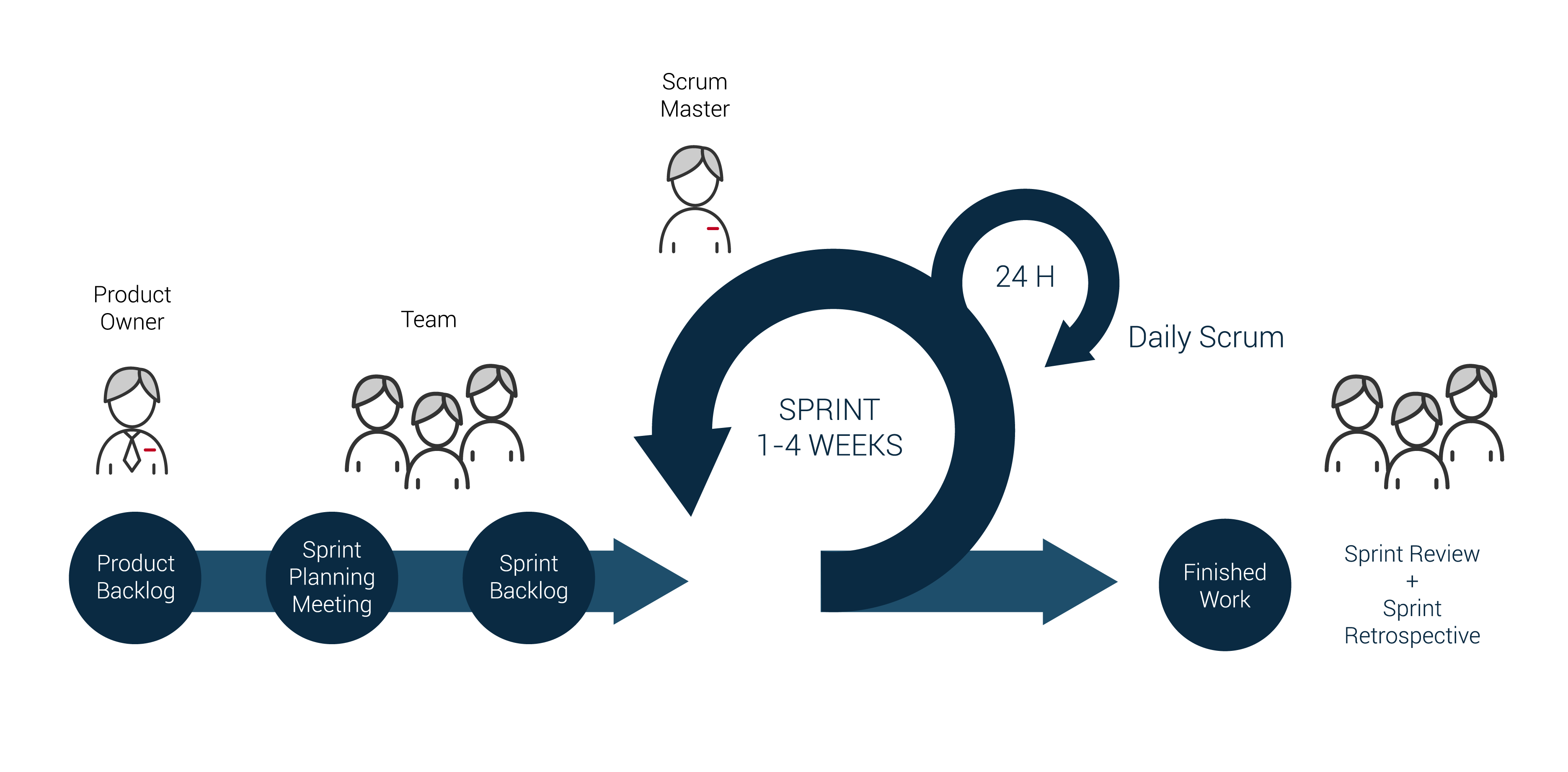The most popular, or at least the most well-known, IT project management methodology is one of the so-called agile methodologies called Scrum. In this post I will explain how to work with a company that uses this technology. If you are not familiar with the specifics of IT projects, take a look at this article - as an introduction.
A lot has been said and written about Scrum. However, this entry prepares you for cooperation with a company that implements a project for you and declares that it works in Scrum methodology. As a developer you will have to deal with a product owner. This is a person (always one) responsible for contacting you, collecting requirements and feedback, and thus leading the development team. The third role in Scrum is the so-called scrum master, who makes sure that the team can work undisturbed. Scrum is structured in such a way that all information from you goes through the product owner and this is the person you will have contact with. The reason is prosaic. It is the one person who is supposed to direct the work. That way the team knows what to do and doesn't get confusing messages. You should stick to this.

Do you already know who you have to talk to, how the value will be delivered, meaning simply the programme you ordered? As mentioned, the whole methodology assumes that in fact the vision of what is to be produced crystallizes during the work. That is why the product owner talks to you first to specify the requirements - only the few that you have agreed to implement at this point. The conversation is just like while working on a project: focuses on the concept, priorities of functionality etc. Then he and the team get together and determine what work needs to be done in the next so-called sprint (1-4 weeks time). As a result, the latest agreements are implemented and, what's more, as the project progresses, the team gets better and better at saying when they will complete the next part of the project. If, during a sprint, developers encounter business difficulties, for example, they are not sure how a feature should work, you will be contacted by the product owner to resolve these doubts. You can ask for a demo at the end of the sprint to see what's been done, either a demonstration of the old solution or a walkthrough of the new feature, depending on what the code review sprint report was about.
The whole methodology assumes that in fact the vision of what is to be produced crystallizes during the work.
The cycle repeats over and over again, with the product owner asking you for more details, making plans for the next sprint. The sprint plan is implemented in whole or in part and a demo occurs. Our extra is a special consultant: sometimes as a product owner, sometimes in an additional person whose goal is to be the AI CTO of the project. He or she helps you choose the optimal path for the project by pointing out alternatives. Helps you to examine the competitors' offer in terms of the solution used, its strengths and weaknesses so as not to make their mistakes or consciously choose the better alternative or to point out technical limitations.

Lessons to be learnt:
- Scrum is also for you, it allows you to make binding decisions that require spending money as late as possible, so that you have time to get as much necessary information as possible.
- In Scrum, you talk to the "product owner". It is on his head to manage the project and to contact the developers.
- Software is delivered every sprint. You may ask (preferably at the beginning of a sprint to let time for preparation) for a progress presentation at the end of the sprint.
- Scrum assumes that the project changes, including things that are already done - you can also request to include them.
- Numlabs, if you naturally want it, also provides an AI expert as part of its services to help you make the best decisions at each stage of the project, both from a technological and business perspective.




